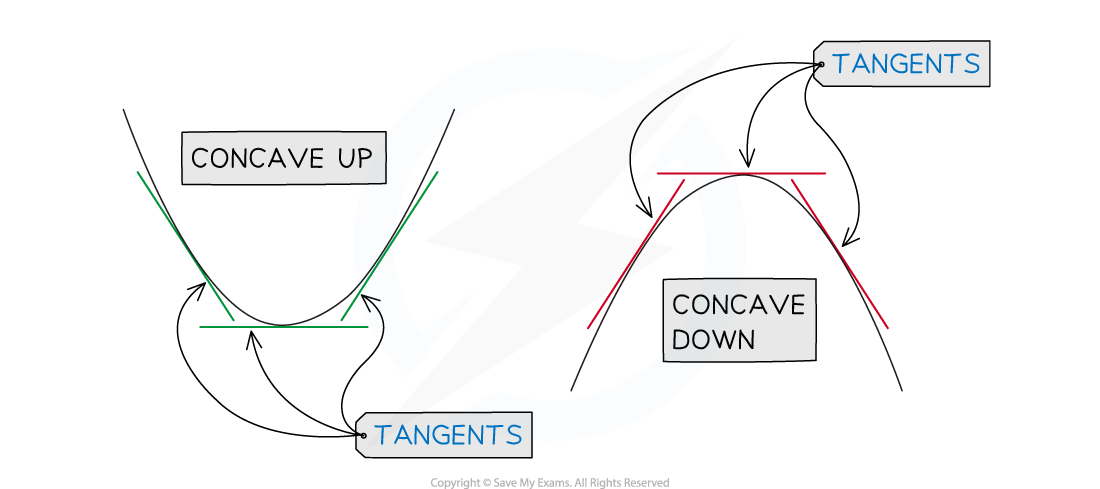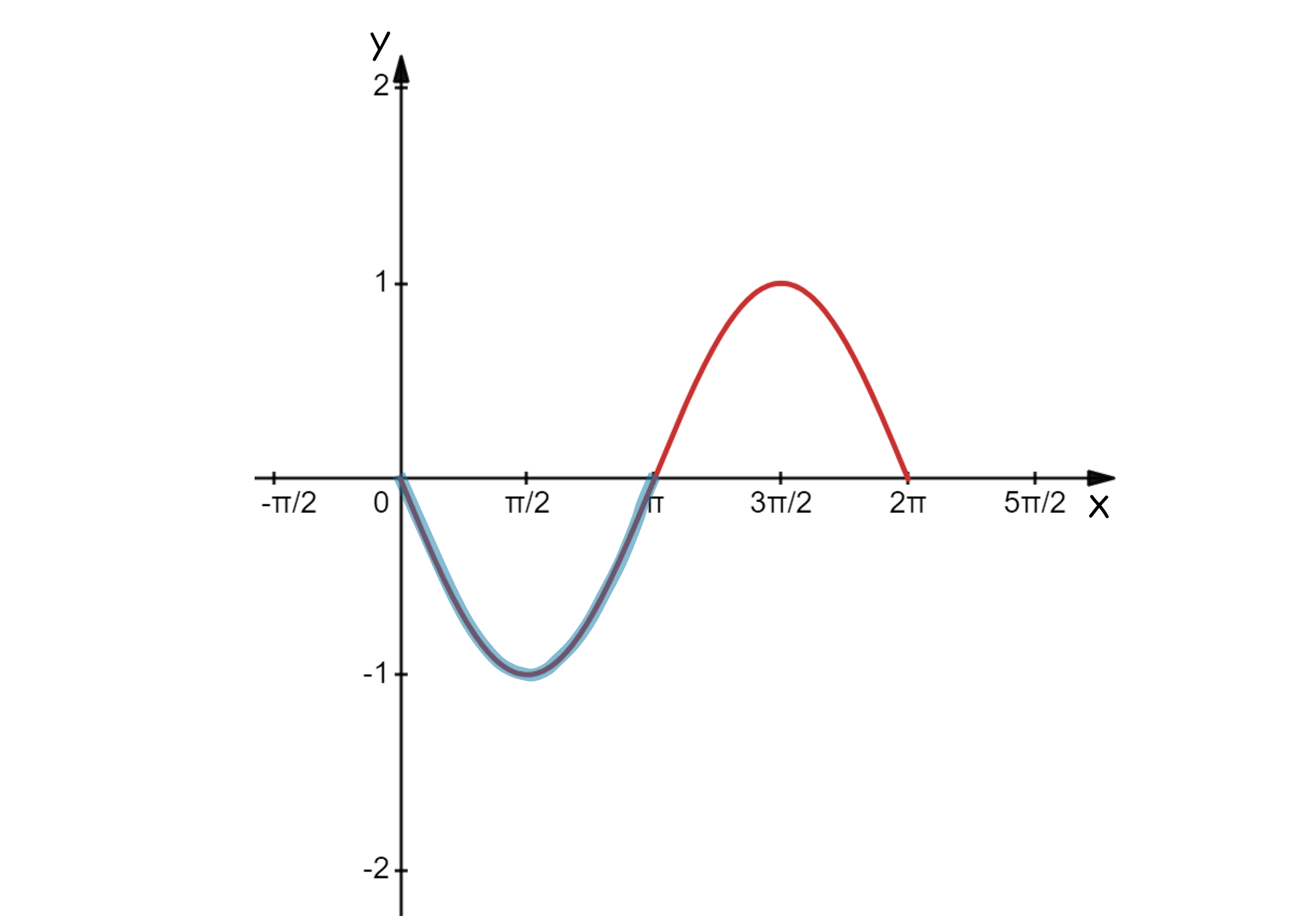Concavity of Functions (College Board AP® Calculus AB): Study Guide
Concavity of functions
What is concavity?
Concavity is the way in which a curve bends, and is related to the second derivative of a function
A curve is:
Concave up if
for all values of
in an interval
is increasing in this interval
Concave down if
for all values of
in an interval
is decreasing in this interval

You can see from the diagram that;
At a local minimum a function is concave up
is positive
At a local maximum a function is concave down
is negative
A point where a graph changes in concavity,
from concave up to concave down or vice versa,
is called a point of inflection
Points of inflection will therefore always have a second derivative of zero
They can have any value for the first derivative

Note that not every point with a second derivative of zero is a point of inflection
The concavity has to change as well
E.g. for
But
is not a point of inflection
for all
Examiner Tips and Tricks
In an exam an easy way to remember the difference is:
Concave down is the shape of (the mouth of) a sad smiley ☹️
They are feeling negative!
Concave up is the shape of (the mouth of) a happy smiley 🙂
They are feeling positive!
Worked Example
The function is defined by
State the interval for which is concave down.
Answer:
A function is concave down when is negative
The following must then be solved in the given domain
The easiest way to solve this is with a graph of
Sketch the graph of for
and highlight where the graph is less than zero

The function is concave down on the interval where the second derivative is less than or equal to zero,
Concave down when
Alternatively you may have been able to find this region by inspecting the graph of (the original function)
Concave down on [0, π]

Unlock more, it's free!
Did this page help you?